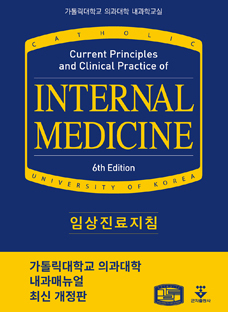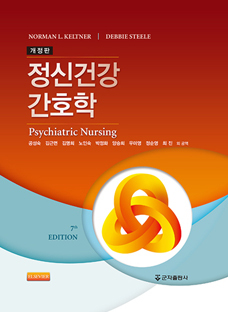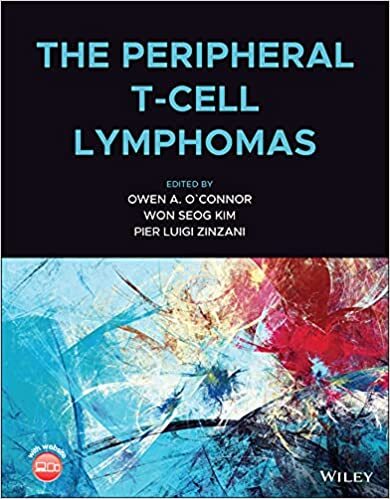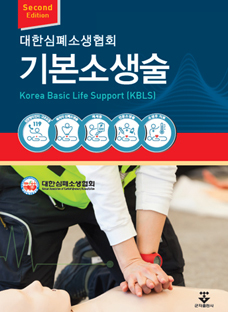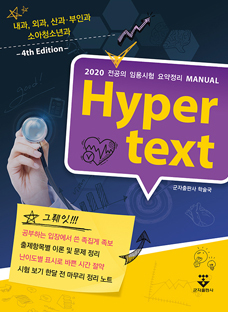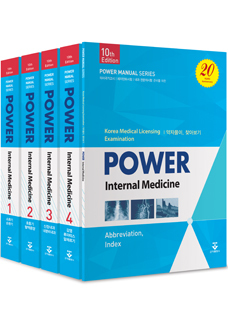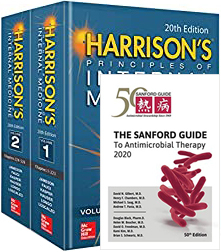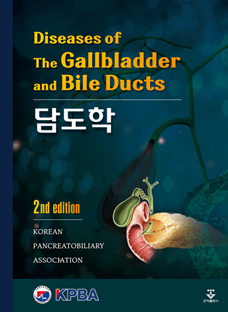Contributors xix
About the Companion Website xxiii
Part I Biological Basis of the Peripheral T-cell Lymphomas 1
1 The Fundamentals of T-cell Lymphocyte Biology 3
Claudio Tripodo and Stefano A. Pileri
Introduction 3
General View of the Differentiation and Function of T Lymphocytes 3
The T-cell System as a Frame for Peripheral T-cell Lymphoma: Taking Plasticity into Account 5
Must Reads 7
References 7
2 Mechanisms of T-cell Lymphomagenesis 9
François Lemonnier, Philippe Gaulard and Laurence de Leval
Introduction 9
Oncogenic Events in the Transformation of T or Natural Killer Cells 9
Genetic Lesions 9
Deregulated Pathways in Peripheral T-cell Lymphoma Oncogenesis (Figure 2.1, Table 2.1) 10
Signaling Pathways 13
Cell-cycle Control 14
Immune Surveillance 14
Role of the Microenvironment in Peripheral T-cell Lymphoma 15
The Model of Angio-immunoblastic T-cell Lymphoma and T Follicular Helper-derived Peripheral T-cell Lymphoma 15
Specific Microenvironment Components Present in Other Primary Cutaneous T-cell Lymphoma Entities 16
Underlying Factors Favoring the Tumor Transformation 18
Viruses 18
Chronic Antigenic Stimulation 19
Other Factors 19
Cell of Origin (Table 2.1) 20
Conclusion 22
Must Reads 22
References 22
3 Epigenetics of T-cell Lymphoma 27
H. Miles Prince, Jasmine Zain, Anas Younes, Sean Whittaker, Owen A. O’Connor and Sean Harrop
Introduction 27
Epigenetic Pathways Altered in T-cell Lymphoma 27
Epigenetic Changes Within Specific T-cell Lymphoma Subtypes 31
Peripheral T-cell Lymphoma Not Otherwise Specified 32
Angioimmunoblastic T-cell Lymphoma and Peripheral T-cell Lymphoma with T Follicular Helper Phenotype 32
Anaplastic Large-cell Lymphoma 33
Adult T-cell Leukemia/Lymphoma 33
Intestinal T-cell Lymphoma 34
Hepatosplenic T-cell Lymphomas 34
Extranodal Natural Killer/T-cell Lymphoma 34
Mycosis Fungoides and Sézary Syndrome 35
Established and Emerging Drugs Targeting the T-cell Lymphoma Epigenome 35
DNA Methyltransferase Inhibitors 35
Isocitrate Dehydrogenase Inhibitors 36
EZH2 Inhibitors 37
BET Inhibitors 38
Protein Arginine Methyltransferases Inhibitors 38
Combination Therapies Involving Epigenetic Targeting Agents 38
Future Directions 38
Must Reads 39
References 39
4 Animal Models of T-cell Lymphoma 47
Keiichiro Hattori, Raksha Shrestha, Tatsuhiro Sakamoto, Manabu Kusakabe and Mamiko Sakata-Yanagimoto
Introduction 47
Angioimmunoblastic T-cell Lymphoma 50
The ROQUIN Mouse Model 50
The Mouse Models Recapitulating Human Angioimmunoblastic T-cell Lymphoma Genomic Features 50
Tet2 Gene Trap Mice 50
G17V RHOA Mouse Model 50
PDX Models of Angioimmunoblastic T-cell Lymphoma 51
Anaplastic Large T-cell Lymphoma 51
Viral and Chimeric Models 51
Transgenic Models 51
CRISPR-Based Models 52
PDX Models of Anaplastic Large-Cell Lymphomas 52
Human T-cell Lymphotropic Virus Type 1 Adult T-cell Leukemia/Lymphoma 52
Mice Expressing HTLV-1 Viral Proteins 52
PDX Models of Adult T-cell Leukemia/Lymphoma 52
Cutaneous T-cell Lymphoma 53
Enteropathy-associated T-cell Lymphoma 53
Conclusion 53
Must Reads 53
References 54
Part II Epidemiology and Classification of the PTCL 57
5 Geographic Distribution of the Peripheral T-cell Lymphomas 59
Global Epidemiology
Amulya Yellala, Avyakta Kallam and James O. Armitage
Historical Perspective 59
Epidemiology 60
Peripheral T-cell Lymphoma, Not Otherwise Specified 60
Angioimmunoblastic T-cell Lymphoma 61
Anaplastic Large-cell Lymphoma 61
Adult T-cell Lymphoma/Leukemia (HTLV Associated) 62
Extranodal NK/T-cell Lymphomas 62
T-cell Prolymphocytic Leukemia 62
Large Granular Lymphocytic Leukemia 62
Primary Cutaneous Gamma/Delta PTCL 63
Enteropathy Associated T-cell Lymphomas and Monomorphic Epitheliotropic Intestinal T-cell lymphoma 63
Hepatosplenic T-cell Lymphoma 63
The Cutaneous T-cell Lymphomas 63
Conclusion 63
Must Reads 64
References 64
6 Classification of the Peripheral T-cell Lymphomas 69
Neval Ozkaya and Elaine S. Jaffe
Introduction 69
Angioimmunoblastic T-cell Lymphoma and Other Nodal Lymphomas of T follicular Helper Cell Origin 69
Angioimmunoblastic T-cell Lymphoma 70
Follicular T-cell Lymphoma 71
Nodal Peripheral T-cell Lymphoma with T-follicular Helper Phenotype 71
Peripheral T-cell Lymphoma Not Otherwise Specified 71
Anaplastic Large-cell Lymphomas 72
Anaplastic Large-cell Lymphoma, ALK-Positive 72
Anaplastic Large-cell Lymphoma, ALK-Negative 72
Breast Implant-associated Anaplastic Large-cell Lymphoma (Provisional) 73
Adult T-cell Leukemia/Lymphoma 74
Intestinal T-cell Lymphomas 74
Enteropathy-associated T-Cell Lymphoma 75
Monomorphic Epitheliotropic Intestinal T-cell Lymphoma 76
Intestinal T-cell ymphoma, Not Otherwise Specified 76
Indolent T-cell Lymphoproliferative Disorder of the Gastrointestinal Tract (Provisional) 77
NK-Cell Enteropathy 78
Hepatosplenic T-cell Lymphoma 78
Mycosis Fungoides 78
Sézary Syndrome 79
Primary Cutaneous CD30-positive T-cell Lymphoproliferative Disorders 79
Lymphomatoid Papulosis 79
Primary Cutaneous Anaplastic Large-cell Lymphoma 80
Subcutaneous Panniculitis-like T-cell Lymphoma 80
Primary Cutaneous Gamma–Delta T-cell Lymphoma 80
Primary Cutaneous CD8+ Aggressive Epidermotropic Cytotoxic T-cell Lymphoma (Provisional) 81
Primary
Cutaneous CD4+ Small/Medium T-Cell Lymphoproliferative Disorder (Provisional) 81
Primary Cutaneous Acral CD8+ T-cell Lymphoma (Provisional) 82
Large Granular Lymphocytic Leukemia 82
T-cell Large Granular Lymphocytic Leukemia 82
Chronic Lymphoproliferative Disorder of NK Cells (Provisional) 82
T-cell Prolymphocytic Leukemia 82
NK-cell Lymphomas 83
Extranodal NK/T-cell Lymphoma, Nasal Type 83
Aggressive NK-cell Leukemia 83
EBV-positive T-cell and NK-cell Lymphoproliferative Diseases of Childhood 83
Must Reads 84
References 84
7 Molecular Classification of the Peripheral T-cell Lymphomas 91
Tyler A. Herek and Javeed Iqbal
Introduction 91
T-cell Development and Activation: An Overview 92
T-cell Receptor Signaling 92
Derivation of Diagnostic Signatures for Molecular Classification of Peripheral T-cell Lymphomas 95
Angioimmunoblastic T-cell Lymphoma and Other T Follicular Helper-derived Malignancies 95
Recurrent Genetic Features 96
Anaplastic Large-cell Lymphomas 96
Recurrent Genetic Features 96
Adult T-cell Leukemia/Lymphoma 97
Recurrent Genetic Features 97
Peripheral T-cell Lymphoma Not Otherwise Specified 97
Recurrent Genetic Features in Two Novel Subgroups 98
Hepatosplenic T-cell Lymphoma 98
Recurrent Genetic Features 98
Extranodal natural killer/T-cell Lymphoma 98
Recurrent Genetic Features 99
Cutaneous T-cell Lymphomas 99
Conclusion 99
Must Reads 99
References 99
Part III Discrete Clinical Subtypes of PTCL (Unique Epidemiology, Therapy and Management) 105
8 Peripheral T-cell Lymphoma Not Otherwise Specified 107
N. Nora Bennani and Stephen M. Ansell
Introduction 107
Epidemiology, Risk Factors, and Clinical Characteristics 107
Basic Principles of Disease Biology 108
Prognostic Tools 109
Frontline Therapy 110
Management of Relapsed or Refractory Disease 111
Future Directions 112
Must Reads 112
References 112
9 Angioimmunoblastic T-cell Lymphoma 115
Jehan Dupuis and Franck Morschhauser
Introduction 115
Clinical and Biological Presentation 115
Epidemiology and Risk Factors, Disease Incidence and Prevalence 117
Basic Principles of Disease Biology 118
TET2 Mutations 119
IDH2 Mutations 120
DNMT3A Mutations 120
Rho A Mutations 121
CD28 Alterations 121
Other Mutations Affecting the T-cell Lymphoma Pathway 121
Management of Disease in the Front Line 122
Management of Relapsed or Refractory Disease 122
Conventional Chemotherapy Agents 123
Bendamustine 123
Pralatrexate 123
Romidepsin 124
Belinostat 124
Newer Targeted Therapy Approaches 125
Future Directions 125
Must Reads 126
References 126
10 The Spectrum of Anaplastic Large-cell Lymphoma 129
Jianping Kong and Andrew L. Feldman
Introduction 129
Epidemiology and Risk Factors 129
Disease Incidence and Prevalence 131
Basic Principles of Disease Biology 133
Management of Disease in the Front Line 134
Management of the Relapsed or Refractory Patient 137
Future Directions 138
Acknowledgement 140
Must Reads 140
References 140
11 Human T-cell Lymphotropic Virus Type 1 Positive Adult T-cell Leukemia/Lymphoma 145
Wataru Munakata and Kensei Tobinai
Epidemiology and Disease Incidence 145
Basic Principles of Disease Biology 145
CCR4 and Adult T-cell Leukemia/Lymphoma 146
Clinical Features of Adult T-cell Leukemia/Lymphoma 146
Prognosis and Prognostic Index of ATLL 147
Front-line Management of Aggressive Adult T-cell Leukemia/Lymphoma 149
Chemotherapy and Hematopoietic Stem-cell Transplantation 149
Mogamulizumab with Dose-intensified Chemotherapy 150
Interferon alpha and Antiretroviral Agents 151
Chemotherapy in Transplant-ineligible Patients with Aggressive Adult T-cell Leukemia/Lymphoma 151
Front-line Management of Indolent ATLL 152
Management of Relapsed or Refractory Patients 152
Mogamulizumab Monotherapy 152
Lenalidomide Monotherapy 153
Other Treatments for Relapsed or Refractory Adult T-cell Leukemia/Lymphoma 153
Future Directions 154
Must Reads 154
References 154
12 Natural Killer/T-cell Lymphomas 159
Seok Jin Kim, Ritsuro Suzuki, Arnaud Jaccard, Soon Thye Lim and Wong Seog Kim
Introduction 159
Epidemiology and Risk Factors 161
Disease Incidence and Prevalence 161
Basic Principles of Disease Biology 161
Genetic Susceptibility to NK/T-Cell Lymphoma 161
Molecular Pathogenesis 162
JAK–STAT and Associated Pathways 162
Nuclear Factor Kappa B and Other Deregulated Pathways 163
The Programmed Cell Death 1/Programmed Death Ligand 1 Pathway 163
Management of Newly Diagnosed Treatment-naïve Patients 163
Diagnosis and Initial Assessment 164
Monitoring the Response 165
Treatment Strategies 165
Localized Disease 165
Disseminated Disease 167
Consolidation Treatment with Hematopoietic Stem-cell Transplantation 167
Management of Relapsed or Refractory Disease 167
Treatment of Localized Nasal Relapse 167
Treatment of a Systemic Relapse 167
Novel Agents for Relapsed or Refractory ENKTL 168
Future Directions 168
Must Reads 168
References 169
13 T-Prolymphocytic Leukemia 175
Dima El-Sharkawi and Claire Dearden
Introduction 175
Incidence 175
Clinical Features 175
Laboratory Findings 175
Treatment 176
Stem-cell Transplantation 178
Treatment for Relapsed/Refractory Disease 178
Future Directions 178
Must Reads 179
References 179
14 Large Granular Lymphocyte Leukemia 183
Karolina H. Dziewulska, Katharine B. Moosic, HeeJin Cheon, Kristine C. Olson, David J. Feith and Thomas P. Loughran, Jr
Introduction 183
Epidemiology and Risk Factors 183
Prevalence of Concomitant Disorders 184
Autoimmune Diseases 184
Hematological Disorders 184
Basic Principles of Disease Biology 185
Biology 185
STAT3 Dysregulation 185
STAT3 and Common Cytopenias 186
JAK–STAT Pathway 187
Other Mutated and Dysregulated Pathways 187
Chronic Activation and Large Granular Lymphocyte Clonal Malignancy 188
STAT3 and Clonality 188
Antigenic Stimulation 188
Immune System Dysregulation 189
Cytotoxic Killer Cells and Autoimmunity 189
Humoral Abnormalities 189
Abnormal Bone Marrow 190
Neutropenia and Rheumatoid Arthritis 190
Spleen Pathology 191
Management of Disease in the Front Line 191
Diagnosis 191
Prognosis 191
Current Treatments 192
Indications for Treatment 192
Evaluation of Treatment Response 192
Therapeutic Approach 192
Canonical Immunosuppressive Treatments 192
Non-canonical Immunosuppressive Treatments 193
Supportive Therapy 194
Summary of Therapeutic Recommendations 194
Management of Relapsed or Refractory Disease 194
Future Directions 194
JAK–STAT Pathway Targeting 194
Natural Compounds 196
Other Candidate Agents 196
Funding 196
Disclosures 197
Must Reads 197
References 197
15 Gamma–Delta T-cell Lymphomas 203
Francine Foss, Aadil Ahmed and Mina Xu
Introduction 203
Epidemiology and Risk Factors 203
Biology of Primary Cutaneous Gamma–Delta T-cell Lymphoma 204
Management of Disease in the Front Line 206
Management of Relapsed/Refractory Disease 208
Must Reads 209
References 209
16 Enteropathy-Associated and Monomorphic Epitheliotropic Intestinal T-cell Lymphomas 211
Craig R. Soderquist, Jennifer Shingleton, Sandeep Dave and Govind Bhagat
Introduction 211
Enteropathy-associated T-cell Lymphoma 211
Epidemiology and Risk Factors 211
Disease Incidence and Prevalence 212
Basic Principles of Disease Biology 212
Morphology and Immunophenotype 212
Molecular and Genetic Alterations 212
Management of Patients in the Front Line 213
Management of the Relapsed or Refractory Patient 214
Future Directions 214
Refractory Celiac Disease 214
Disease Definition, Risk Factors, Incidence, and Prevalence 214
Basic Principles of Disease Biology 214
Morphology and Immunophenotype 214
Molecular and Genetic Alterations 215
Management of Patients in the Front-Line 216
Management of the Relapsed or Refractory Patient 216
Future Directions 216
Monomorphic Epitheliotropic Intestinal T-Cell Lymphoma 216
Disease Risk Factors, Incidence, and Prevalence 216
Basic Principles of Disease Biology 216
Morphology and Immunophenotype 216
Molecular and Genetic Alterations 218
Management of Disease in the Front Line 218
Management of Relapsed or Refractory Disease 218
Future Directions 218
Must Reads 218
References 219
17 Hepatosplenic T-cell Lymphomas 225
Robert N. Stuver, Mwanasha Merrill and Salvia Jain
Epidemiology and Disease Incidence 225
Basic Principles of Disease Biology 227
Clinical Features 227
Management of Disease in the Front Line 228
Management of the Relapsed or Refractory Disease 229
Splenectomy 230
Future Directions 230
Funding 231
Must Reads 231
References 231
18 Cutaneous T-cell Lymphoma 235
Alejandro A. Gru, Bethanie Rooke, Kevin Molloy and Julia Scarisbrick
Introduction 35
Epidemiology and Risk Factors 236
Basic Principles of Disease Biology 237
Clinical, Pathologic, and Immunophenotypic Findings 240
Management of Front-Line Mycosis Fungoides/Sézary Syndrome 247
Early-stage Disease (Stages IA–IIA) 248
Late-stage Disease (Stage IIB–IVA2) 250
Stage IIB (Tumor-stage Disease) 250
Stage III–IVA1 Disease (Erythrodermic Disease and Sézary) 250
Stage IVA2–IVB Disease 250
Management of Relapsed or Refractory Disease with Mycosis Fungoides/Sézary Syndrome 250
Early-stage Disease (Stage IA–IIA) 250
Late-stage Disease (IIB–IVA2) 251
Stage IIB (Tumor-stage Disease) 251
Stage III–IVA1 (Erythrodermic Disease) 251
Stage IVA2–IVB Disease 252
Front-Line Management of Non-mycosis Fungoides Cutaneous T-cell Lymphomas 252
Management of Relapsed or Refractory Non-mycosis Fungoides Cutaneous T-cell Lymphomas 252
Future Directions 252
Must Reads 253
References 253
19 Other Rare Subtypes of Peripheral T-cell Lymphoma 259
Pier Paolo Piccaluga
Introduction 259
Chronic Lymphoproliferative Disorders of Natural Killer Cells 259
Epidemiology and Risk Factors 259
Disease Incidence and Prevalence 259
Basic Principles of Disease Biology 260
Management of Front-line Disease 260
Epstein–Barr Virus-associated T-cell and NK-cell Lymphoproliferative Disorders of Childhood 260
Systemic Epstein–Barr Virus-positive T-cell Lymphoma of Childhood 260
Epidemiology and Risk Factors 260
Basic Principles of Disease Biology 260
Management of Front-Line Disease 261
Chronic Active Epstein–Barr Virus Infection of T- and NK-cell Type, Systemic Form 261
Epidemiology and Risk Factors 261
Basic Principles of Disease Biology 261
Management of Front-Line Disease 262
Chronic Active Epstein–Barr Virus Infection of T- and NK-cell Type, Cutaneous Form 264
Hydroa Vacciniforme-like Lymphoproliferative Disorder 264
Basic Principles of Disease Biology 264
Management of Disease in the Front Line 264
Severe Mosquito Bite Allergy 265
Epidemiology and Risk Factors 265
Basic Principles of Disease Biology 265
Management of Disease in the Front-Line 265
Future Directions 265
Must Reads 265
References 266
Part IV Treatment of the PTCL 269
20 Standard Front-line Therapies 271
Raphael Koch and Lorenz Truempe
Introduction 271
Initial Workup and Risk Stratification 271
Front-line Therapy 274
Front-line Treatment Approaches for Common Subtypes 274
Systemic Anaplastic Large-cell Lymphomas 276
Breast Implant-associated Anaplastic Large-cell Lymphomas 277
Enteropathy-associated T-cell Lymphoma and Monomorphic Epitheliotropic Intestinal T-cell Lymphoma 277
Hepatosplenic T-cell Lymphoma 278
Extranodal natural killer/T-cell Lymphoma, Nasal Type 279
T-cell Prolymphocytic Leukemia 280
Adult T-Cell Leukemia/Lymphoma 280
Must Reads 281
References 281
21 Approved Agents in the Relapsed or Refractory Setting, Excluding Brentuximab Vedotin 287
Helen Ma and Owen A. O’Connor
Introduction 287
Challenges in Developing New Drugs in Peripheral T-cell Lymphomas 288
Drugs Approved by the US Food and Drug Administration with an Indication in Relapsed/Refractory Peripheral T-cell Lymphoma 288
Pralatrexate 289
Pharmacology 289
Early-phase Data 289
Pivotal Data 289
Recent Developments 291
Histone Deacetylase Inhibitors (Including Romidepsin and Belinostat) 291
Pharmacology 291
Early Phase Data 292
Pivotal Data 292
Recent Developments 293
Drugs Approved by the US Food and Drug Administration But Without An Indication in Relapsed/Refractory Peripheral T-cell Lymphoma 294
Etoposide 294
Pharmacology 294
Clinical Experiences in Peripheral T-cell Lymphoma 294
Summary 294
Bortezomib 294
Pharmacology 294
Clinical Experiences in Peripheral T-cell Lymphoma 296
Recent Developments 296
Bendamustine 296
Pharmacology 296
Clinical Experience in Peripheral T-cell Lymphoma 296
Recent Developments 296
Gemcitabine 296
Pharmacology 296
Clinical Data 297
Recent Developments 297
Drugs Approved by International Regulatory Agencies, Not Including the United States, that Carry an Indication in Relapsed/Refractory Peripheral T-cell Lymphoma 297
Chidamide 297
Pharmacology 297
Early Phase Data 297
Pivotal Data 297
Recent Developments 297
Forodesine 297
Pharmacology 297
Early Phase Data 297
Pivotal Data 298
Recent Developments 298
Considerations in the Selection of Therapy 298
Treatment Goals 298
Aggressive Versus Indolent Disease 299
Transplant Eligible or Ineligible 299
Suitability for Chemotherapy 299
Conclusion 299
Must Reads 299
References 300
22 The Role of Autologous Stem-cell Transplantation in Peripheral T-cell Lymphomas 305
Juan Alejandro Ospina-Idárraga, Rolando Humberto Martinez-Cordero, Leonardo José Enciso-Olivera and Henry Idrobo-Quintero
Introduction 305
Autologous Stem-cell Transplantation in First Complete Remission 306
Autologous Stem-cell Transplantation in Relapsed/Refractory Disease 307
Interpretation of Available Literature 307
Identifying the Most Relevant Determinants for Survival among Patients with Peripheral T-cell Lymphoma Undergoing Autologous Stem-cell Transplantation 308
Status of Response Prior to Autologous Stem-cell Transplantation 309
Risk of Stage 310
Number of Prior Therapies and Refractory Disease 311
Autologous Stem-cell Transplantation on Specific Subtypes of Peripheral T-cell Lymphoma 311
Peripheral T-cell Lymphomas Not Otherwise Specified 311
Angioimmunoblastic T Cell Lymphoma 312
Anaplastic T Large-cell Lymphoma 312
Extranodal Natural Killer/T-cell Lymphoma, Nasal Type 313
The Role of Autologous Stem-cell Transplantation in Cutaneous T-cell Lymphomas 314
Must Reads 314
References 315
23 Allogeneic Stem-cell Transplantation 319
Anna Dodero and Paolo Corradini
Introduction 319
Allogeneic Stem-cell Transplantation for Relapsed and
Refractory Disease (Focus on Nodal Hystotypes) 320
Allogeneic Stem-cell Transplantation as Consolidation of First Remission 322
Allogeneic Stem-cell Transplantation in Specific Subtypes 322
Cutaneous T-cell Lymphomas 322
Hepatosplenic T-cell Lymphomas 324
Extranodal Natural Killer/T-cell Lymphomas, Nasal Type 324
Adult T-cell Leukemia/Lymphoma 324
Future Directions 325
Must Reads 325
References 325
24 Emerging Immunotherapy Approaches in Peripheral T-cell Lymphomas 329
Barbara Pro and Andrei Shustov
Introduction 329
Monoclonal Antibody Therapy 329
Alemtuzumab 330
Mogamulizumab 330
Immunoconjugate-Based Therapy for Peripheral T-Cell Lymphoma 331
Brentuximab Vedotin 332
Cell-Mediated or Cellular Immunotherapy in Peripheral T-Cell Lymphoma 333
PD1–PD-L1 Checkpoint Inhibition 334
AFM13 – Targeted Natural Killer Cell Immunotherapy Facilitator 335
TTI-621 – Targeted Macrophage Immunotherapy Facilitator 335
4-1BB – Enabled Adoptive Therapy of Epstein–Barr Virus-Positive Malignancies 335
IPH4102 (Anti-KIR3DL2 Monoclonal Antibody) 336
Chimeric Antigen Receptor T-cell Therapy for Peripheral T-cell Lymphoma 336
Challenges and Future Directions 336
Must Reads 337
References 338
25 Emerging New Small Molecules in Peripheral T-cell Lymphomas 343
Alessandro Broccoli and Pier Luigi Zinzani
Introduction 343
Demethylating Agents 344
Janus-associated Kinase–Signal Transducers and Activators of Tranx_scription and Spleen Tyrosine Kinase Inhibitors 345
Phosphatidylinositol 3-Kinase Inhibitors 345
Miscellaneous 347
Pro-apoptotic Small Molecules 347
Farnesyltransferase Inhibitors 347
Aurora Kinase Inhibitors 347
Conclusion 348
Must Reads 348
References 348
Part V Future Directions 351
26 The Value and Relevance of T-cell Lymphoma Registries 353
Tetiana Skrypets, Martina Manni, Monica Civallero, Iryna Kriachok and Massimo Federico
Introduction 353
Population-based Cancer Registries 353
Retrospective Studies 355
T-cell Lymphoma Registries 360
T-cell Project 1.0 360
COMPLETE 363
T-cell Project 2.0 363
Future Directions 364
Disclosures 364
Must Reads 364
References 365
27 Innovative Chemotherapy-free Approaches for the Treatment of Peripheral T-Cell Lymphoma 367
Enrica Marchi, Ahmed Sawas, Helen Ma, Luigi Scotto and Francesca Montanari
Introduction 367
Targeting the Peripheral T-cell Lymphoma Epigenome 369
Romidepsin Plus Pralatrexate 370
Preclinical Rationale 370
Clinical Experience 370
Romidepsin Plus 5-Azacytidine 371
Preclinical Rationale 371
Clinical Experience 371
Romidepsin Plus Duvelisib 372
Preclinical Rationale 372
Clinical Experience 372
Romidepsin Plus Lenalidomide 373
Preclinical Rationale 373
Clinical Experience 373
Panobinostat and Bortezomib 373
Preclinical Rationale 373
Clinical Experience 374
A Glance at the Future: Building on the Active Doublets 374
Must Reads 375
References 375
28 Global Collaborations 379
Dejan Radjeski, Eliza Hawke, Owen A. O’Connor, Pier Luigi Zinzani, Won Seog Kim and Enrica Marchi
Introduction 379
The Global T-cell Lymphoma Consortium 380
The Mission 380
Structure 380
Organizational Features 380
Submission of Trial Concepts 381
Budget Negotiations 382
Institutional Review Board 383
Publications 383
Conclusion 384
Index 385
